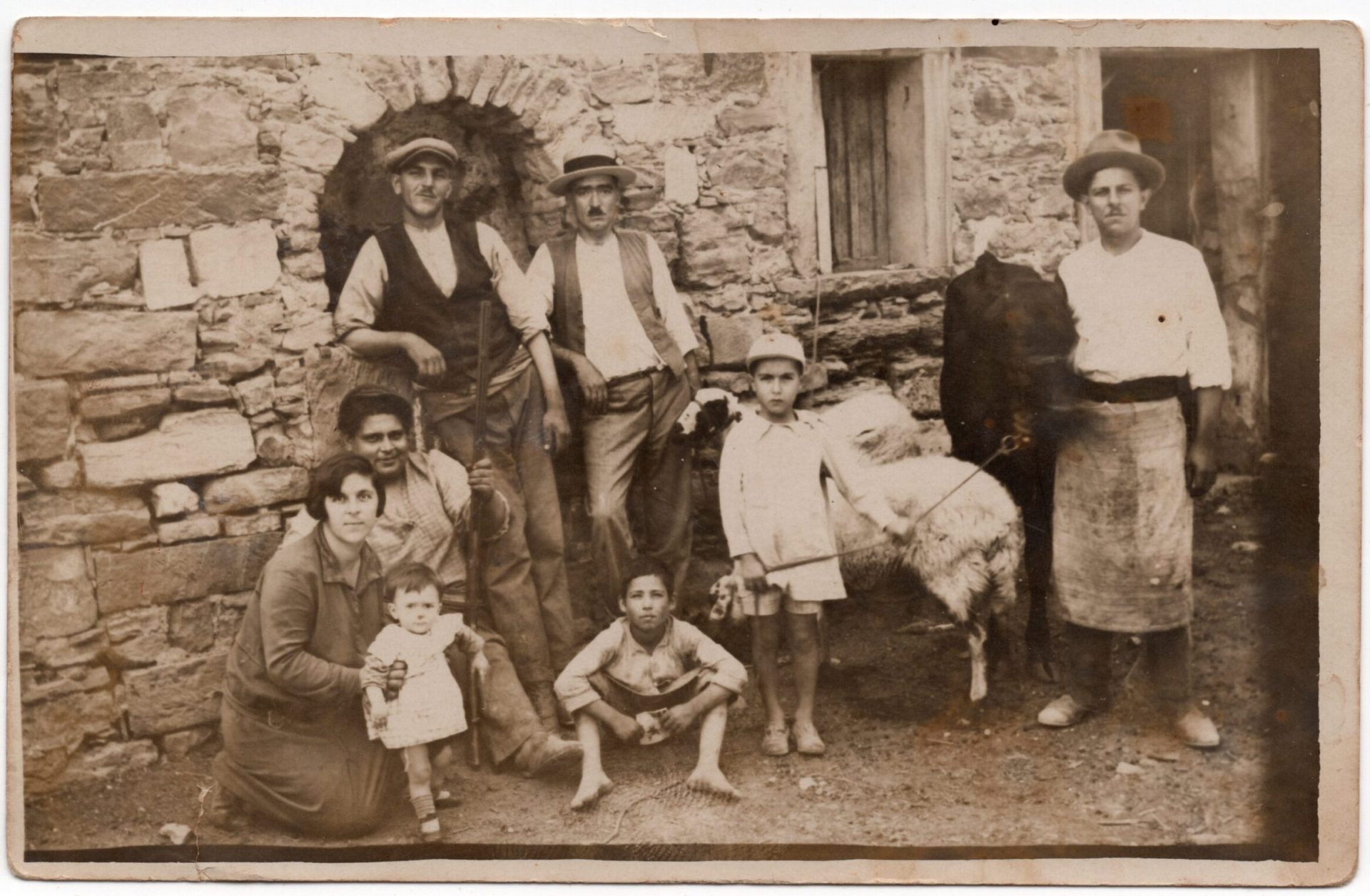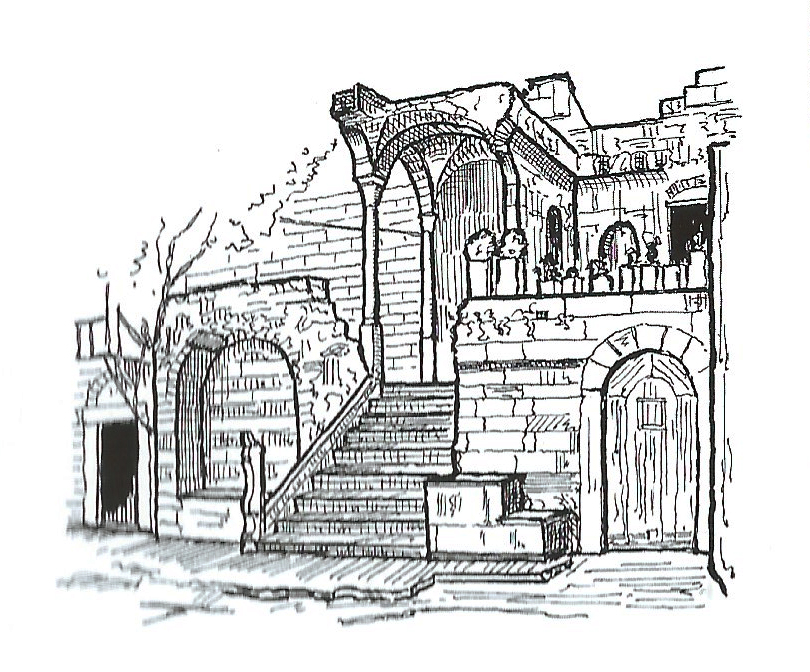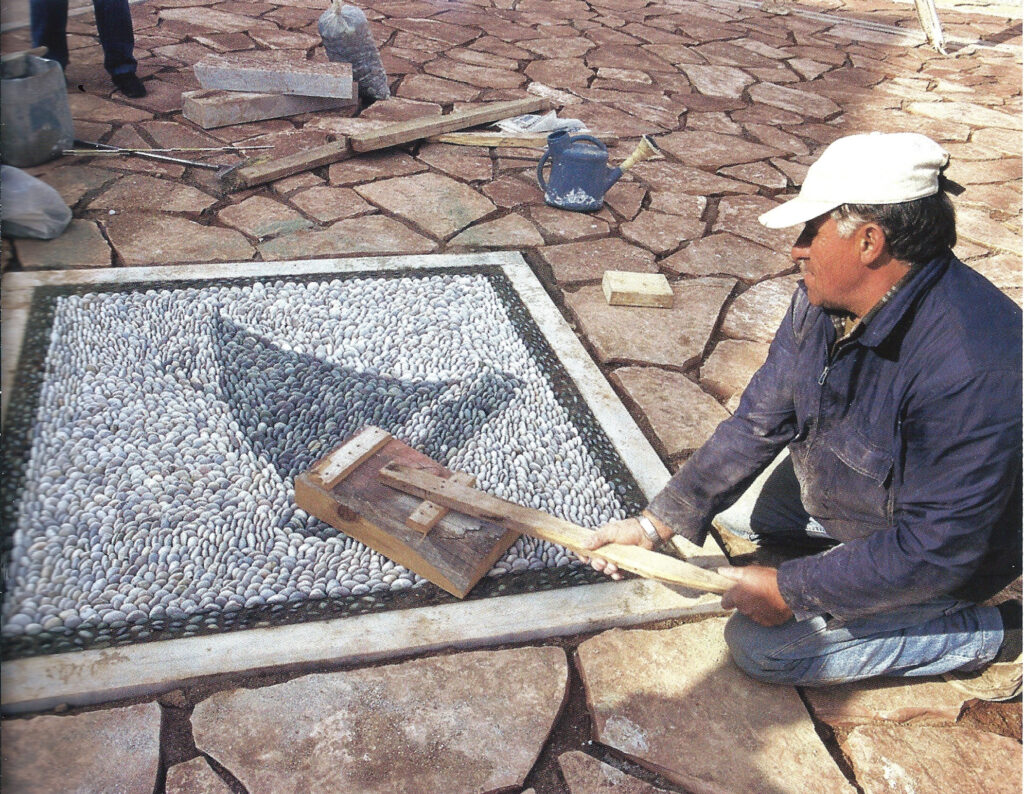PEOPLE

Architects
Architects played a particular role in the evolution of Kambos. In older times, there were people that designed buildings and overviewed their construction. In more recent years we know the names of some architects, like the Italian that designed the Mahairadiko in 1905. In recent years we know of the existence of some post-earthquake, with a special Italian who designed the Machairidiko in 1905, which was used as a model for the villa of Argyris in Psychiko.
The contribution of architects was decisive in the 20th century, for the promotion of the architectural wealth of Kambos and its preservation as a historical place and an architectural landscape. The great Greek architect Pikionis, invited to Chios by the aristocrat Filippos Argenti, made the first listing of the architecture of Kambos. His work was later continued by the British architect Arnold Smith and inspired many modern architects like Fani Anairousi and Leonidas Mylonakis. The declarations of protected architectural areas in Kambos in the 1990s created a protective network against the destruction of the orchards and helped preserve the area’s architectural wealth. The architects contributed in raising the awareness of the locals regarding the preservation of the treasures of Kambos. With Pikionis as the pioneer, at the invitation of the patriot Filippos Argentis and his successor Arnold Smith, the first record of the architecture of Kampos inspired many younger architects, with Fani Anairousis and Leonidas Mylonadis as the first. The plains of Kampos in the early 1990s, created a protective net against the demolition of the orchard and the destruction of the architectural wealth, but the architects with their creative contribution made the society aware of the preservation of the treasures of Kampos.

Technicians
The technicians that built Kambos originated traditionally from the nearby village of Thymiana. They knew how to work with the local tufa stone that was used for most houses in Kambos. In previous centuries they worked in teams and were organised in guilds. They also built in other areas and the tufa stone has been also used in the construction of the port of Chios. Many buildings in Thymiana were built in the same way and with the same material, but they lack the magnificence of the buildings in Kambos. The best example of the art of the local craftsmen is the church of saint Efstratios, built in 1890. In previous centuries they worked in groups and were organized in a guild. They themselves built buildings in other areas and we know that the local stone was used to shape the port of Chios. Many buildings of Thymiana are built in the same way and the same materials, but not with the same grandeur of the buildings of Kampos. The best example of the art of local craftsmen is the church of Agios Efstratios, built in 1890.
In different periods, the technicians developed specialisations, according to what they were working on; the house, the staircase, the cistern, the gates, the walls and so on.
Apart from the builders, other technicians were active in Kambos, like carpenters, blacksmiths, and other specialties that were needed for the completion of the buildings. Out of those, it is worth mentioning the marble artists, some of them from Tinos, an island with a long marble crafting tradition, as well as the painters of the walls and ceilings of the mansions. Of particular interest to them are the marble sculptors, some certified from Tinos, and the painters of the frescoes and especially the ceiling paintings of the villas.

A craftsman creating a pebble floor.
Well technicians
The well technicians were a special category of craftsmen that constructed the wells. They could locate the rights spots, open the initial hole, shape the upper part of the well and dig in. After the initial opening of the well they were obliged to work in the narrow limits of the well, at great depths and go up and down with ropes. After the initial drilling they were forced to work in the narrow confines of the well at a depth of several meters and to go up and down with ropes when they finished their work.
Workers and other labourers
The people of Kampos and Perivolia traditionally included many categories of tenants and workers. For the orchards to be productive and abundant, a lot of care was needed as well as many hands. People came to work from Kambochora, from the Mastiha villages and even further from Avgonyma and other northern villages. Many of the workers of the orchards stayed in Kambos and evolved financially and socially, taking over other roles; they rented land or even bought their own and cultivated it. The tenant farmers called anestates started off as workers, and then moved on to a more managerial role. The creation of processing units, mills, olive presses, packaging plants and later small artisanships or juice factories, created the need for labour, specialised professionals and even owners of these units. There were also cooks, cart pullers, housekeepers, wet nurses, servants, and other people that were attending on the owners of the orchards, while they were in Kambos. Small cafes, grocery stores, even barbershops were until recently common in Kambos, sometimes sharing their space, creating small poles of activity. Many of the orchard workers stayed in Campos and developed economically and socially by taking on other roles; they rented land or at best bought their own lands to cultivate. We must assume that the insurgents started with workers before taking on a more managerial role. The creation of processing units, mills, olive mills, packaging plants and later small handicrafts or the juice factory, created the need for workers, specialized professionals and of course owners of these units. Along with the other workers, one must count the employees, the cooks, the cooks, formerly the coachmen, the housekeepers, the feeders, the maids and the maids, and generally those who served the owners of the orchards when they lived in the Campos. Limited today but in greater prosperity until a few decades ago were the small cafes, groceries or barbershops of Kampos that often shared the same space creating small poles of activity.
In a more prominent position were the spiritual workers of Kambos, the priests and the teachers. They were both called “teacher” and had the keys to social activities of both young and old people.